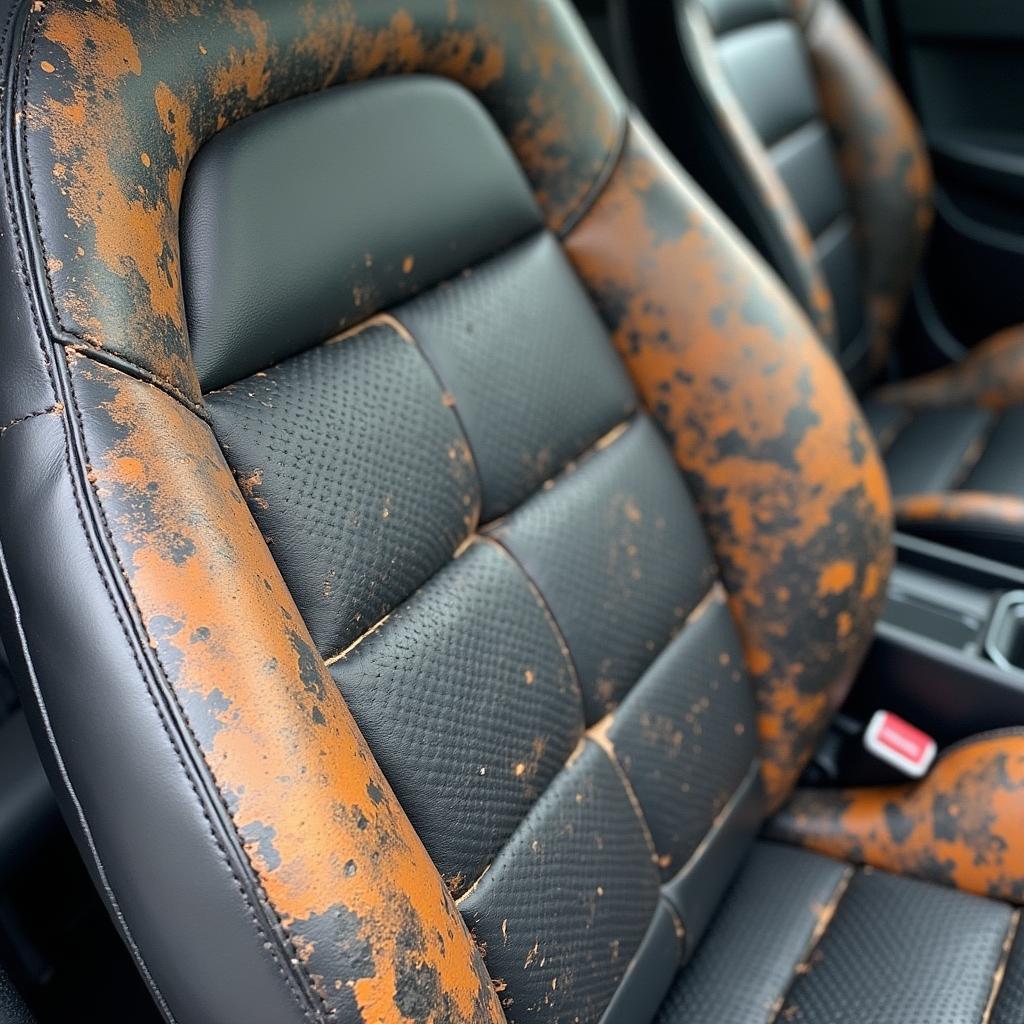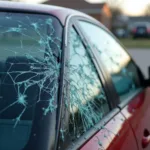Worn-out car seats can make even the most luxurious vehicles look tired and unkempt. But fear not, because with a bit of elbow grease and the right know-how, you can restore your car seats to their former glory. This comprehensive guide will walk you through the process of repairing worn-out car seats, covering everything from identifying the damage to choosing the right repair methods and products.
Assessing the Damage: What’s Eating Your Car Seats?
Before diving into the repair process, it’s crucial to identify the type and severity of the damage. Car seats endure a lot, from spills and UV rays to everyday wear and tear. Common types of car seat damage include:
- Cracks and Tears: Often caused by sharp objects, age, or prolonged exposure to sunlight.
- Fading and Discoloration: Primarily caused by sun damage and can make the seats look dull and aged.
- Stains: Can range from coffee spills to ink marks and can be notoriously difficult to remove.
- Wear and Thinning: High-traffic areas like the driver’s seat often experience thinning and wear, leading to discomfort and an unsightly appearance.
Choosing the Right Repair Strategy
Once you’ve assessed the damage, you can choose the appropriate repair strategy. Here’s a breakdown of common car seat repair methods:
1. DIY Repair Kits: A Cost-Effective Solution
For minor cracks, tears, and scratches, DIY repair kits are a budget-friendly and convenient option. These kits typically include a color-matched filler, adhesive, and a texture pad to mimic the original seat material.
2. Liquid Leather Repair: A Seamless Fix
Liquid leather repair is ideal for larger tears, burns, and deep scratches. This method involves using a liquid leather filler that dries to create a durable and flexible patch.
3. Seat Covers: A Quick and Easy Cover-up
While not a permanent solution, seat covers are an excellent option for concealing extensive damage or simply refreshing the look of your car’s interior.
4. Professional Upholstery Repair: For Extensive Damage
For significant damage or if you lack the time or expertise for DIY repairs, seeking professional upholstery repair is recommended. Professionals have the skills and tools to deliver exceptional results.
Material Matters: Repairing Leather vs. Cloth Seats
The material of your car seats plays a significant role in determining the best repair approach:
Leather Car Seat Repair
- Cleaning and Conditioning: Regularly cleaning and conditioning your leather seats is crucial for preventing cracks and fading.
- Repairing Cracks and Tears: Use a leather filler or repair compound to fill cracks and tears, followed by a color-matching leather dye.
- Addressing Wear and Tear: Leather conditioners and protectants can help restore moisture and prevent further damage.
best leather repair for car seats
Cloth Car Seat Repair
- Cleaning and Stain Removal: Use a dedicated upholstery cleaner to remove stains and dirt.
- Repairing Tears and Burns: Patching kits or fabric glue can be used to repair minor tears and burns.
- Dealing with Fading: Consider dyeing faded cloth seats to restore their color.
Tips for Maintaining Your Repaired Car Seats
“Regular maintenance is key to prolonging the life of your car seats, especially after repairs,” advises John Smith, a seasoned automotive upholstery expert at CarRepairOnline. “Simple practices like using a sunshade and promptly cleaning spills can go a long way.”
Here are some additional tips for keeping your car seats looking their best:
- Use a Sunshade: Protect your seats from harmful UV rays, which cause fading and cracking.
- Clean Spills Immediately: The longer a spill sits, the harder it is to remove.
- Regularly Vacuum and Clean: Remove dust, dirt, and debris to prevent premature wear.
- Condition Leather Seats: Keep leather seats supple and moisturized to prevent cracking.
- Use Seat Protectors: Consider using seat protectors, especially if you frequently transport children or pets.
Conclusion: Restore Comfort and Style to Your Drive
Repairing worn-out car seats doesn’t have to be a daunting task. By following the steps outlined in this guide, you can effectively address the damage, restore your car’s interior, and enjoy a more comfortable and enjoyable driving experience. Remember, regular maintenance is key to preserving the results of your hard work and ensuring your car seats stay in top condition for years to come.
FAQs about Repairing Worn Out Car Seats
1. Can I use regular fabric dye on car seats?
It’s not recommended to use regular fabric dye on car seats as it may not adhere properly and could transfer to clothing. Opt for dyes specifically designed for automotive upholstery.
2. How long does a DIY car seat repair typically last?
The longevity of a DIY repair depends on the quality of the kit used, the extent of the damage, and how well the repair is performed. A well-executed repair can last for several years.
3. Is it worth repairing a car seat with extensive damage?
If the damage is too extensive or involves structural components, it might be more cost-effective to replace the seat entirely. Consult a professional upholsterer for an assessment.
4. How can I prevent my car seats from cracking?
Regularly cleaning and conditioning leather seats, using a sunshade, and parking in shaded areas can help prevent cracking.
5. What’s the best way to remove pet hair from car seats?
A lint roller, a rubber glove, or a vacuum cleaner with an upholstery attachment can effectively remove pet hair from car seats.
6. Can I repair a cigarette burn on a cloth car seat?
Minor cigarette burns can sometimes be repaired using a fabric shaver to remove the damaged fibers and then applying a fabric patch. However, larger burns might require professional attention.
7. What should I do if I spill something on my car seat?
Clean up spills immediately with a damp cloth and a mild cleaning solution. Blot the spill, don’t rub, to prevent it from setting deeper into the fabric.
For more helpful tips and in-depth guides on car repairs and maintenance, visit our website: how to repair worn leather car seats
Need assistance with repairing your car seats or other car issues? Contact our team of experts via WhatsApp: +1(641)206-8880, Email: [email protected]. We’re available 24/7 to help you get back on the road with confidence.



